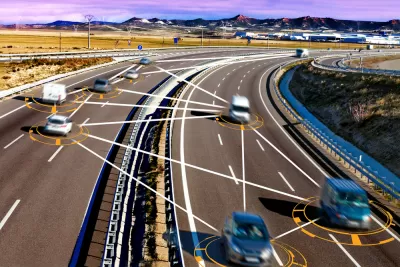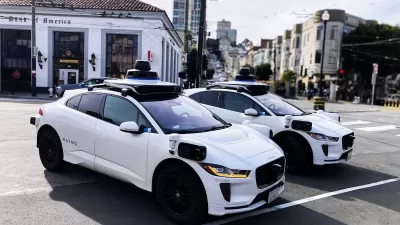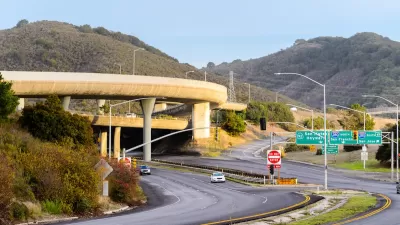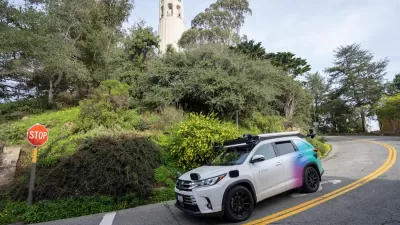The complex algorithms used by self-driving vehicle technology use massive amounts of energy, which could lead to a steep rise in carbon emissions as autonomous cars become more commonplace.

A new study from the Massachusetts Institute of Technology (MIT) warns that, without changes in technology, the growth of autonomous vehicles will spur massive energy consumption. As Rima Sabina Aouf reports in Dezeen, “The study found that with a mass global takeup of autonomous vehicles, the powerful onboard computers needed to run them could generate as many greenhouse gas emissions as all the data centres in operation today.”
As Aouf explains, “The high emissions are the result of the huge computing workload placed on each self-driving vehicle.” The vehicles use ‘deep neural networks’ to constantly make inferences that drive decisions. According to the study, “One billion vehicles would make 21,600 trillion inferences. To put that into perspective, the researchers say all of Facebook's data centres worldwide currently make a few trillion inferences each day.”
Study co-author Soumya Sudhakar says that “If we just keep the business-as-usual trends in decarbonisation and the current rate of hardware efficiency improvements, it doesn't seem like it is going to be enough to constrain the emissions from computing onboard autonomous vehicles.”
Autonomous car manufacturers can get ahead of the problem by working to improve the efficiency of their hardware and algorithms. “In a scenario where 95 per cent of global vehicles are autonomous in 2050, the study suggests that the technology's efficiency must double about every 1.1 years, such that each autonomous vehicle is consuming less than 1.2 kilowatts of energy for computing.”
FULL STORY: MIT study finds huge carbon cost to self-driving cars

Alabama: Trump Terminates Settlements for Black Communities Harmed By Raw Sewage
Trump deemed the landmark civil rights agreement “illegal DEI and environmental justice policy.”

Planetizen Federal Action Tracker
A weekly monitor of how Trump’s orders and actions are impacting planners and planning in America.

The 120 Year Old Tiny Home Villages That Sheltered San Francisco’s Earthquake Refugees
More than a century ago, San Francisco mobilized to house thousands of residents displaced by the 1906 earthquake. Could their strategy offer a model for the present?

Opinion: California’s SB 79 Would Improve Housing Affordability and Transit Access
A proposed bill would legalize transit-oriented development statewide.

Record Temperatures Prompt Push for Environmental Justice Bills
Nevada legislators are proposing laws that would mandate heat mitigation measures to protect residents from the impacts of extreme heat.

Downtown Pittsburgh Set to Gain 1,300 New Housing Units
Pittsburgh’s office buildings, many of which date back to the early 20th century, are prime candidates for conversion to housing.
Urban Design for Planners 1: Software Tools
This six-course series explores essential urban design concepts using open source software and equips planners with the tools they need to participate fully in the urban design process.
Planning for Universal Design
Learn the tools for implementing Universal Design in planning regulations.
Clanton & Associates, Inc.
Jessamine County Fiscal Court
Institute for Housing and Urban Development Studies (IHS)
City of Grandview
Harvard GSD Executive Education
Toledo-Lucas County Plan Commissions
Salt Lake City
NYU Wagner Graduate School of Public Service





























